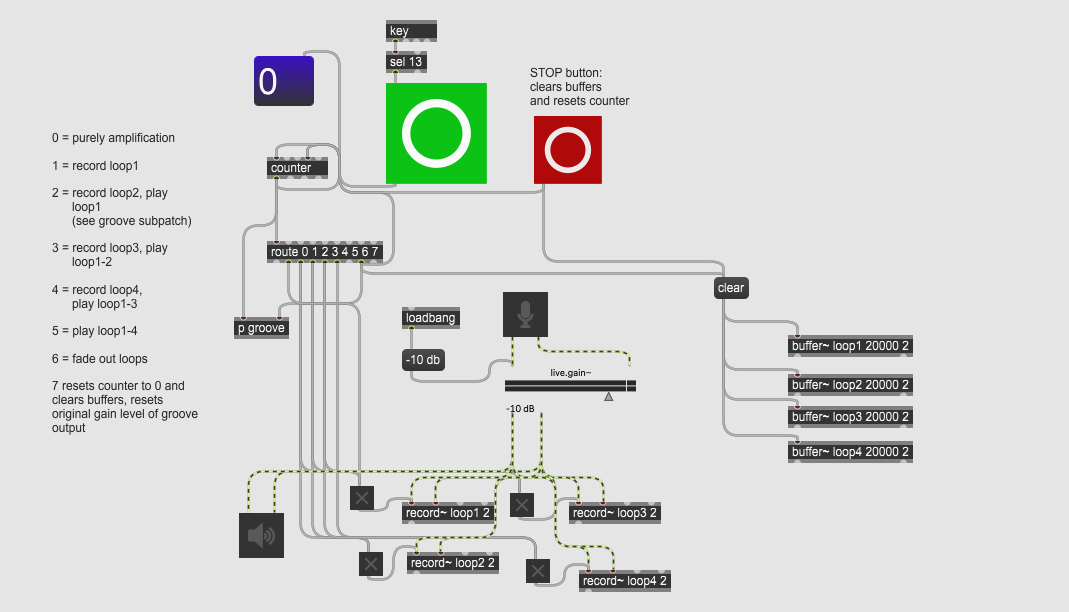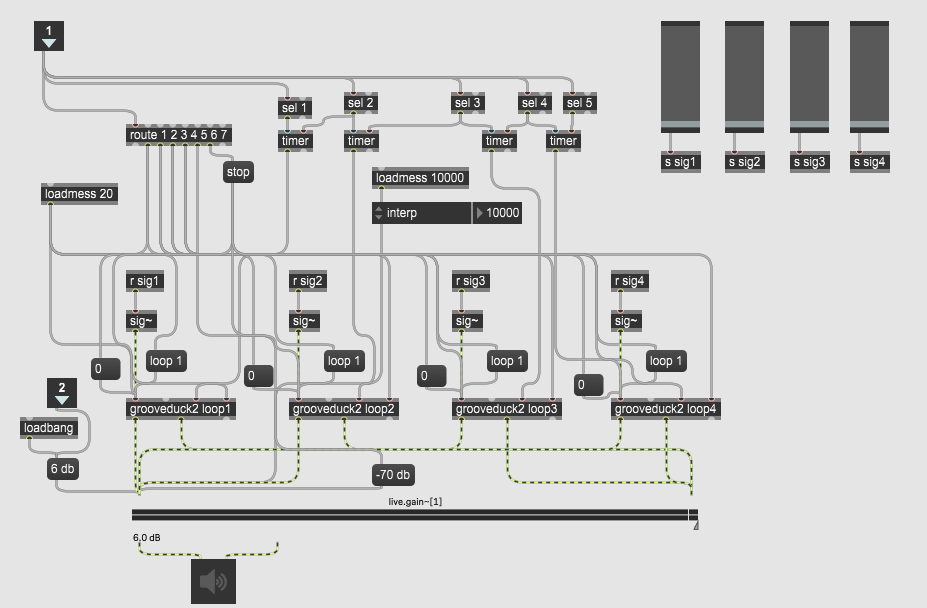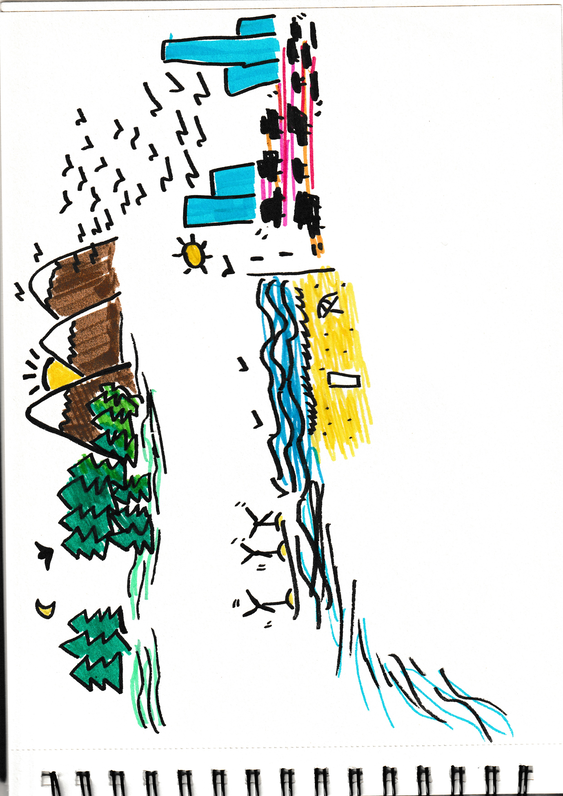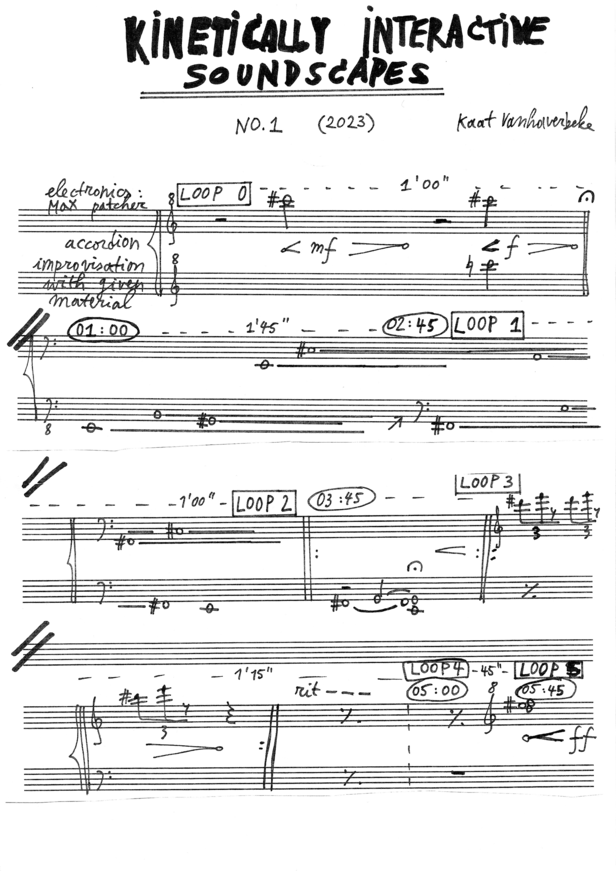2- Kinetically Interactive Soundscapes
For the second phase of the research, I created a compositional tool myself to play with the amplification of movements. This was important to me because of my development as a composer and because of what my perspective, with the close relation to my instrument, could mean for this research.
Kinetically Interactive Soundscapes started as a sketch with the working title "Contrapunctus", a composition for which I wanted to use loops or layers. Layering implies in itself getting a "bigger" sound. Initially, I was looking into counterpoint. With the creation of Contrapunctus, I wanted to artificially make a polyphonic composition using a MaxMSP patcher - since programming in Max was my newest interest. Practically, this implied making a loop station in Max and shifting the theme in pitch and speed, done by altering the speed of the signal.
To implement the variability of movement, I worked with a MIDI ring called Wave, designed by Genki Instruments. The ring captures motion as a parameter of variability, so a performer can control sound with movements. There are 6 functions: tilt, pan, roll, vibrato, click and tap, depending on how you use the ring or which kinetical parameter you want to focus on.
However, soon I began to rethink the initial plan of Contrapunctus: the counterpoint themes that I used were melodically too busy, causing a rather meaningless musical chaos. Furthermore, I couldn't reach a point of subtility and authentic expressiveness within this idea. It is then, while playing and experimenting, that I discovered the recognizability of my almost artificial music. It resembled noises we hear every day around us. I found it at least funny and remarkable that departing from an accordion sound, I could imagine the sound of cars honking in city traffic. In the spirit of keeping options open, I developed my "Kinetically Interactive Soundscapes" further as an improvisation tool.
Max patcher: basic idea and execution
The counter object in MaxMSP is used as the base for my loop station. It notes the amount of times the green button is triggered. The route object will then trigger for each number (0 to 7) the respective actions. The red button will reset everything and clears the buffers for the recorded loops. The green and red button can be mapped to the MIDI ring as well (using the functions of short and sustained "click"), yet in the end I used my Bluetooth page-turn pedal, which does the trick when paired with my PC. Using the pedal was more feasible than clicking the MIDI ring while playing. After all, in one of the modes of this page-turn pedal, it will replace the keyboard's SPACE key for the left and the ENTER (or CR) key for the right wing of the pedal. I connected this right one to the large green button, using the key object in Max with the ASCII code for the ENTER key.
The loops get recorded and stored in buffers that can reach up to 20000 milliseconds, however, the playback time of the loops is measured by the time interval between clicks on the green button (cf. timer object). The Wave ring is mapped to the 4 sliders, which are each connected to a single groove object, determining the speed of the signal for each loop. The speed of the signal of course changes both the pitch and speed of the sound. They use a different Wave function, as it was difficult to capture three-dimensional accordion playing in one function.
June 26: rehearsal of "Contrapunctus"
After facing the technical challenges related to working with electronics, I started shaping my initial idea of Contrapunctus. Unfortunately, this was still without the Genki ring, due to a delay in my purchase order.
After playing around for a while at home, prior to this studio session, I came up quite spontaneously with the theme of "Brother Jacob" in A Flat Major, to try out canonical possibilities with the system that I created in Max. The audio fragments below are very low quality due to not having loudspeakers at home and having to use the microphone and speakers of my PC.
Having heard the result with good audio technology in the studio, the (humouristic) effect of using Brother Jacob didn't satisfy me after all in my vision of the piece, for the reasons mentioned before. Consequently, I had to look for other means of expression.
June 28: discovering resemblance of daily noises
In the next studio session, I came up with the idea of making a soundscape. By playing and improvising, I imagined noises we hear every day around us: the sound of a bush trimming machine, cars honking in city traffic etc. I could think of creating a sound world full of wonder and excitement for the audience to wander in. In the next couple of weeks, I worked on making drawings and a musical score.
July-September 2023
However, while playing from that score, more and more I felt the need to make it less concrete and allow more freedom. After all, I would prefer to perform the music by heart - it is then that I focused more on the visual aspect as well.
The video below marks my first version of the eventual performance "3DaccordionXL" and dates from 10 September 2023. Ultimately, there is still room to develop my idea more and more, but this version is something I would already like to test in front of an audience.




